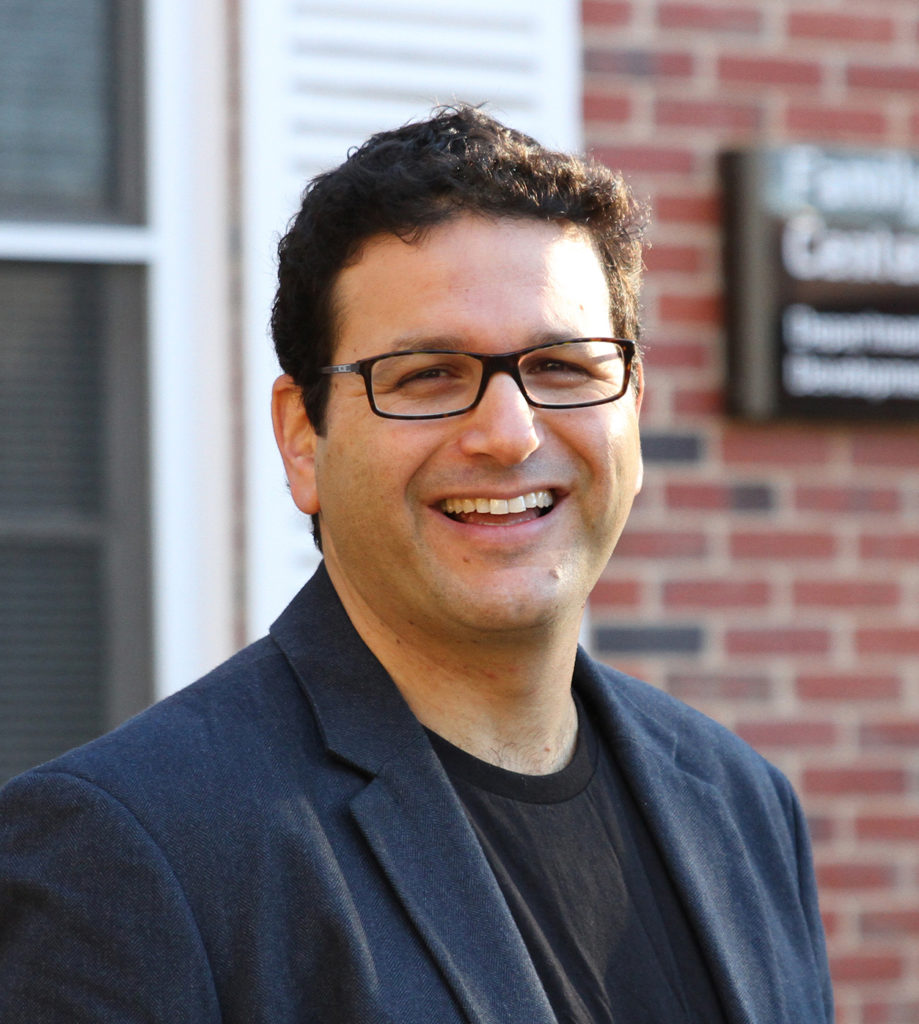 If you were a 10-year-old living in Georgia in 1997, here’s what might have been on your mind. The world probably felt bigger after Atlanta hosted the Centennial Olympic Games the year before. The Spice Girls ruled radio, and you might spend Friday night watching “Sabrina the Teenage Witch.” Beanie Babies might have been on your Christmas wish list. And in December “Titanic” would break box office records (though just this summer, those records were toppled by “Top Gun: Maverick”).
If you were a 10-year-old living in Georgia in 1997, here’s what might have been on your mind. The world probably felt bigger after Atlanta hosted the Centennial Olympic Games the year before. The Spice Girls ruled radio, and you might spend Friday night watching “Sabrina the Teenage Witch.” Beanie Babies might have been on your Christmas wish list. And in December “Titanic” would break box office records (though just this summer, those records were toppled by “Top Gun: Maverick”).
And if you were a 10-year-old living in Georgia in 1997, you and your parent might have met with someone from the University of Georgia—someone who asked questions about your lives and your family relationships. These visits, subsequently repeated every two to three years, were the beginning of the Family and Community Health Study, which began collecting data 25 years ago. For the last two and a half decades, FACHS has collected data on health and well-being among African American families, focusing on how stress affects mental and physical health and identifying the factors that provide protection from such stressors.
The project’s legacy is vast, including more than 200 published papers plus the creation of research-informed, community-based programs that help families strengthen their relationships, parenting processes and youth competencies. But it started with members of Georgia communities who 25 years ago began sharing their lives with UGA.
“I tell every person how special they are, and I tell them that they’re heroes,” said Valeria Jones, the scheduler/recruiter for FACHS.
“I want them to know that they have made a big difference in the world.”
What keeps people healthy?
In the early 90s, OIBR Distinguished Scholar Ron Simons started the Iowa Youth and Families Project while working at Iowa State University. It included 452 families with a seventh grader and examined how a number of factors—family processes, economic hardship, etc.—affected the kids as they grew up.
But Simons was concerned about the lack of diversity, both with regard to race and family structure (all of the families included two parents). He also wanted to start working with the kids when they were younger. So he and colleagues at the Center for Family Research collaborated with African American scholars, sociologists and psychologists to design a new project that would target 10-year-olds from African American families in both Iowa and Georgia.
Then they set out to recruit participants, starting with more than 800 families that included a fifth grader. Initial data collection involved surveys with the children and their primary and secondary caregivers, assessing traits like discipline and affection as well as examining neighborhood data like the number of playgrounds and churches. They also interviewed the children’s best friends, and as they got older, they interviewed their romantic partners as well. Over time they began collecting data not just from the primary caregivers, but about the primary caregivers.
“We tried to look at the major dimensions of life, like education, neighborhood conditions, parent-child interaction, marital interaction, income and economic hardship,” said Simons, now a Regents’ Professor of Sociology in UGA’s Franklin College of Arts and Sciences.
The researchers were also interested in issues unique to the African American experience—both positive and negative. They explored structural racism, examining the caregivers’ occupations and the schools the kids attended, noting whether college prep courses were offered in schools that predominantly served Black communities. They documented incidents of discrimination or harassment by police, as well as things like racial socialization—the ways parents guide their children in how to deal with issues related to race, counter negative messages they are likely to encounter, and develop pride in being Black.
“We’re especially interested in the way that things like racial socialization can overcome exposure to ugly incidents,” Simons said.
Former OIBR director and Distinguished Scholar Steve Beach joined the project nearly a decade after it started.
“It was really an important study in that initial phase,” said Beach, Regents’ Professor of Psychology in the Franklin College. “It gave rise to some observations about what families do to help raise strong youth who are able to deal with the various kinds of challenges that confront them.”
That idea led the team to start looking at more health-related characteristics and collecting more biological measures like height, weight, BMI and blood pressure. These days, they’re also collecting saliva and blood samples.
“That really characterizes the next phase of FACHS—that shift toward trying to understand what keeps people healthy,” Beach said. “What kinds of romantic partner relationship processes? What kinds of family processes? What kinds of broader community processes or internal psychological processes contribute to people being able to stay healthy?”
The researchers were also providing health-related data to any participants whose results—high blood sugar, or high blood pressure, for example—indicated that they might need to see a doctor.
In addition, findings from the FACHS project have informed and given rise to community-based prevention programs like the Strong African American Families Program, designed to support parents and youth during the transition from early adolescence to the teenage years. The Strong African American Families Teen Program is designed for older teens, with a focus on reducing risks such as substance abuse and sexual risk taking. These programs have been implemented in 52 cities and 65 organizations, and 792 facilitators have been trained to lead them. A more recent development has been the Promoting Strong African American Families Program, designed to support two-parent families of youth in early adolescence.
This focus on putting research-based programming back into the community has its roots in the creation of the Center for Family Research. Gene Brody, Regents’ Professor in the Owens Institute for Behavioral Research, organized the center around three facets: conducting research with projects like FACHS; evaluating if results can be shaped in a way that can make people’s lives better; and getting the information into the hands of people in the community.
“There are groups at CFR that are dedicated to each of those three different components,” Beach said. “That’s because of the leadership that Gene Brody provided.”
Is your clock fast or slow?
From the start, FACHS has involved faculty collaborators at numerous institutions, including Rob Philibert at the University of Iowa, Carolyn Cutrona at Iowa State University, and Rick Gibbons and Meg Gerrard at the University of Connecticut. At UGA, the team includes Leslie Simons and Man Kit “Karlo” Lei, both in sociology, in addition to Simons and Beach.
Having a large team allows them to tackle multiple topics. Gibbons focuses on substance abuse and risky sex, for example. Leslie Simons studies family processes, adolescent outcomes, dating behavior and intimate partner violence. Ron Simons, Beach and Lei focus on health issues.
The many publications resulting from this project explore a variety of topics. One recent study revealed that when family stress is high, teen depression can follow. Another explored the health consequences faced by Black young adults who were successful, finding that the economic hardship and exposure to racial discrimination they faced in earlier years can get “under the skin,” leading to physical deterioration that persisted through adolescence and well into adulthood.
“FACHS has influenced a lot of different lines of research. The value of affirming black identity for kids was an early and important finding,” Beach said. “For parents, the findings about community-level influences on health and the importance of inflammation as a mediator of stressor effects on health really stand out. Recently we’ve been working on tracing the influence of childhood adversity on adult health.”
One innovation that has expanded the FACHS project has been a focus on the epigenome. As people age, their epigenome—how various genes are turned on or off—also ages. Tools called biological epigenetic clocks evaluate this activity and are strong predictors of factors like blood pressure, blood sugar, kidney function and inflammation, as well as chronic illnesses like coronary vascular disease, diabetes, stroke and cancer. One such tool, the GrimAge clock, provides a score in years, revealing if aging is accelerated or decelerated.
“You add up your score on this index, and it tells you how old you are in terms of biology,” Simons said. “It might say you are 38, and if you’re actually 43, that’s good news. It means you’re experiencing decelerated aging.”
A number of factors appear to impact a person’s biological age, according to Simons. Education, income and marriage appear to decelerate GrimAge, and discrimination and financial hardship increase it. Smoking is associated with a higher GrimAge, and so is an unhealthy diet. Simply living in an impoverished area has an impact, increasing aging by several years.
“Our question was how is epigenetic age affected by what happens to you as a little kid? And the answer is a lot,” he said. “If you grew up in poverty, if your parents got divorced, if you changed schools several times, if you had a parent die—if you experienced two or more of those things as a child, then you are typically 4.6 years older than your chronological age when you hit your mid 50s. That’s pretty amazing.”
There’s a lot of loyalty to them. They go to a lot of trouble to participate,” Simons said. “But they believe that there’s value. They take us at our word that this is going to be helpful to African Americans. And we believe that it has been helpful, and will continue to be.”
After 25 years, there’s no end in sight for FACHS, according to Beach.
“There’s a lot left to learn from the participants. They have been wonderful in their dedication to the project and in their willingness to work with us over the years,” he said. “It seems likely that we’ll find ways to expand the sample and continue asking more detailed questions about health mechanisms, integrating new technologies as they become available. There’s no shortage of new ideas floating around.”
Written by: Allyson Mann



 If you were a 10-year-old living in Georgia in 1997, here’s what might have been on your mind. The world probably felt bigger after Atlanta hosted the Centennial Olympic Games the year before. The Spice Girls ruled radio, and you might spend Friday night watching “Sabrina the Teenage Witch.” Beanie Babies might have been on your Christmas wish list. And in December “Titanic” would break box office records (though just this summer, those records were toppled by “Top Gun: Maverick”).
If you were a 10-year-old living in Georgia in 1997, here’s what might have been on your mind. The world probably felt bigger after Atlanta hosted the Centennial Olympic Games the year before. The Spice Girls ruled radio, and you might spend Friday night watching “Sabrina the Teenage Witch.” Beanie Babies might have been on your Christmas wish list. And in December “Titanic” would break box office records (though just this summer, those records were toppled by “Top Gun: Maverick”).





